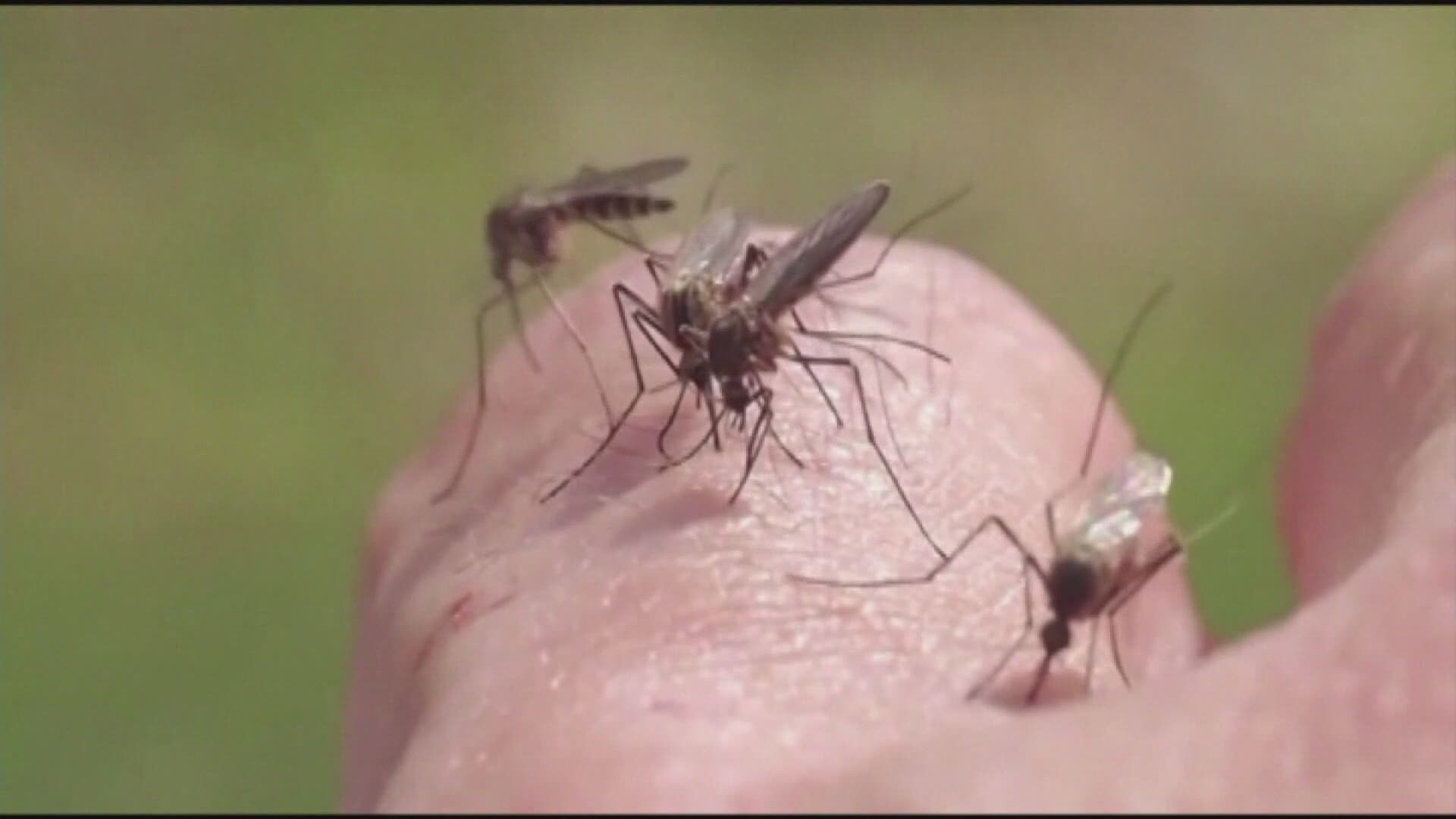BOW, N.H. — The New Hampshire Department of Health and Human Services (DHHS), Division of Public Health Services (DPHS) announced Friday that an adult from Bow, NH tested positive for Jamestown Canyon virus (JCV).
The person was not hospitalized and is doing well, but experienced fever and mild neurological symptoms, according to NH DHHS.
This is the second detection of JCV in the state this year. In early July, it was reported that an adult in Loudon, NH tested positive for the virus. That person was hospitalized for neurological symptoms and released to recover at home.
JCV is transmitted by the bite of an infected mosquito. There are no vaccines to prevent JCV and treatment consists of supportive care.
The arboviral risk level for Bow will be increased to high. The arboviral risk level indicates the risk of transmission of these infections to people from mosquitoes.
The surrounding towns of Goffstown, Dunbarton, Hopkinton, and Allenstown will increase to moderate. The risk level for the surrounding towns of Hooksett, Pembroke and Concord will remain moderate.
“Jamestown Canyon Virus is one of three different infections that can be transmitted through the bite of a mosquito in New Hampshire,” NH State Epidemiologist Dr. Benjamin Chan said. “This is the second infection identified in NH this year, and the risk for mosquito-transmitted infections will only increase through the summer and fall until there is a mosquito-killing hard frost. New Hampshire residents and visitors need to continue to take steps to protect themselves from mosquito bites.”
Jamestown Canyon virus is a mosquito-borne pathogen that circulates widely in North America primarily between deer and mosquitoes but can also infect humans.
Reports in humans have been increasing over the last several years as recognition and testing for this virus has increased, according to NH DHHS. This is New Hampshire’s eleventh case of JCV since the first report of the disease in the state in 2013.
Many illnesses caused by JCV are mild, but moderate-to-severe central nervous system involvement requiring hospitalization have been reported, including fatal infections.
In addition to JCV, risk for infection in NH by Eastern Equine Encephalitis virus (EEEV) and West Nile Virus (WNV) will continue to increase through the summer and fall until mosquitoes are no longer biting.
NH DHHS said residents of and visitors to New Hampshire should continue to protect themselves and their family members. Prevention guidelines are included below.
People can be infected and not develop any symptoms, or only develop very mild symptoms for all of the mosquito-borne diseases present in New Hampshire. Early symptoms can include fever, muscle aches, headaches, and fatigue. More serious central nervous system disease, including meningitis or encephalitis can occur with these diseases. If you or someone you know is experiencing symptoms, including fever and headache, contact your local medical provider.
NH DHHS outlines the following prevention guidelines for mosquito and tick diseases:
1. Eliminate habitat and breeding locations.
Mosquitoes
- Mosquitoes lay their eggs in standing water. Remove outdoor items that hold water (old tires, cans, plastic containers, ceramic pots).
- Drill holes in the bottom of outdoor recycling containers, clean roof gutters and ensure proper drainage.
- If not in use, empty and/or cover swimming pools, wading pools and hot tubs.
- Turn over wheelbarrows and change water in birdbaths at least twice weekly.
- Ticks
- Minimizing areas where hosts for the ticks, such as rodents and deer, can congregate to eat, sleep or feed.
2. Be aware of where mosquitoes and ticks live.
- Weeds, tall grass, and bushes provide an outdoor home for mosquitoes and ticks, alike.
- Make sure that doors and windows have tight-fitting screens. Repair or replace all screens in your home that have tears or holes.
- Resting mosquitoes can often be flushed from indoor resting sites by using sweeping motions under beds, behind bedside tables etc. and once in flight, exterminated prior to sleeping at night.
- Avoid tick-infested areas. If in tick-infested areas, walk in the center of trails to avoid contact with overgrown grass, brush, and leaf litter at trail edges.
3. Protect yourself from bites.
- When outside, wear protective clothing such as socks, long-sleeved shirts, and long pants (preferably tucked in socks). Light-colored clothing helps you spot ticks.
- Wear insect repellents, such as one containing 30% or less DEET (N,N-diethyl-methyl-meta-toluamide), Picaridin, para-menthane-diol, IR3535, or 2-undecanone or oil of lemon eucalyptus.
- Treat clothing with permethrin, ideal for hunters as it is odorless when dry.
- Vitamin B, ultrasonic devices, incense, and bug zappers have not been shown to be effective in preventing mosquito bites.
- Shower as soon as possible after spending time outdoors.
- Check for ticks daily, on you and your pets. Ticks can hide under the armpits, behind the knees, in the hair, and in the groin.
- Wash and dry clothing after being outdoors. Tumble clothes in a dryer on high heat for 10 minutes to kill ticks on dry clothing. If the clothes are damp, additional time may be needed.
- Early removal of ticks can reduce the risk of infection. Inspect all body surfaces carefully, and remove attached ticks with tweezers. Monitor your health closely after a tick bite and be alert for symptoms of illness. Contact your physician to discuss testing and treatment.
More information on mosquito-borne diseases can be found HERE.

